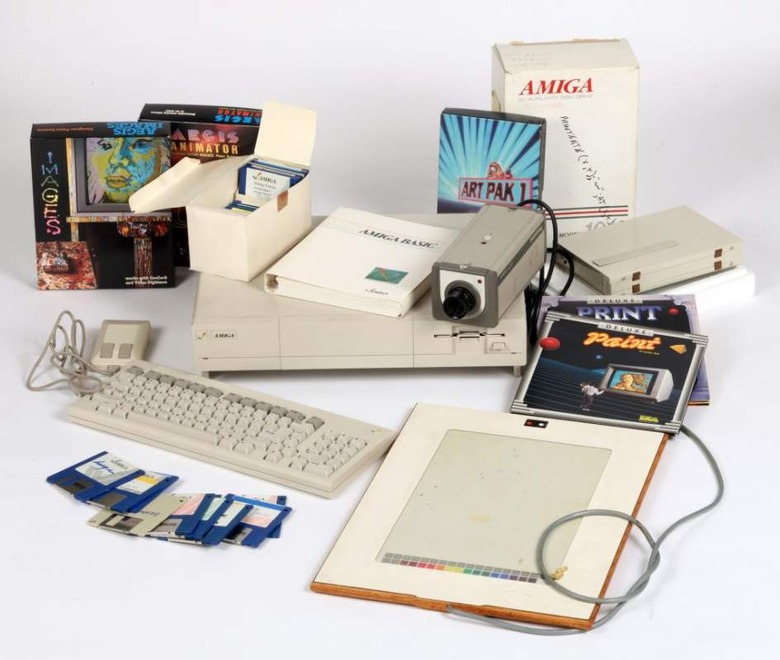Warhol NFT Auction Opens Pandora's Box On "Original Art"
Christies is set to auction several Andy Warhol digital works of art on the NFT blockchain. This would at first seem like the perfect opportunity to demonstrate how an NFT could be used to buy and sell art that would otherwise seem ephemeral. There's just one problem: The files described by the auction are not the originals they profess to be – they couldn't be.
The "five original drawings" by Andy Warhol shown in the Christies NFT auction listing are listed as having dimensions of 6000 x 4500 pixels. The original artworks were created on an Amiga computer with 320 x 200 pixel resolution, per the limits of the graphics framebuffers on said machine. As described by researcher Golan Levin, "it should be clear that a 6000x4500 image in Amiga's uncompressed .PIC format could not possibly fit on a 1.4MB floppy, nor in the Amiga 1000's 512kb RAM."
I'm Director of the @CreativeInquiry lab at @CarnegieMellon, which collaborated with @cory_arcangel & @cl0x in discovering the works. You can read about our recovery process here: https://t.co/IRXXDCWwyH and especially in this detailed report: https://t.co/LRzQbOsMKV.
— Golan Levin (@golan) May 20, 2021
It's shown by Golan that the works being auctioned by Christies must be at least 2nd-generation creations. They are at least (if they are the original files at the described size) upscaled versions as created by "a CMU grad student" at the direction of The Warhol Foundation after their rediscovery, decades after Warhol's death.
Not only could these files not possibly be the original files created by Warhol – they're made with different sorts of pixels. The original files were created on a computer that did not work with "square" pixels.
The sale from Christies is for what Christies suggests are the original digital artworks as made by Warhol. This begs the question: What is an original Warhol? Does it need to have been looked upon by Warhol's eyes? There are certainly Warhol artworks considered legitimate Warhol artworks that were not painted or printed by Warhol – he worked with crews of printers and painters that often did the entirety of the work at Warhol's direction.

Further, a whole bunch of Warhol's most famous works are based on other works – they're images of designs of products he did not design, like the Campbell's Soup can, or photographs of famous people.
WAIT A MINUTE: What is an NFT in the first place?
Do these pieces of work count as original Warhol works if the original files – and the original display on which they were created – are no longer available for displaying the work? Are these works so far away from the original that they'd be best dedicated to the public domain instead of owned by any one person or organization?
Or does the NTF set up this situation so that the only part that matters is the transaction between the people who "own" the artworks now and whoever will own them before, via Christies? Is the only issue the idea that there is an actual "original" file out there to be had in the first place?
Care to take a guess at what Andy Warhol would say about this situation?
